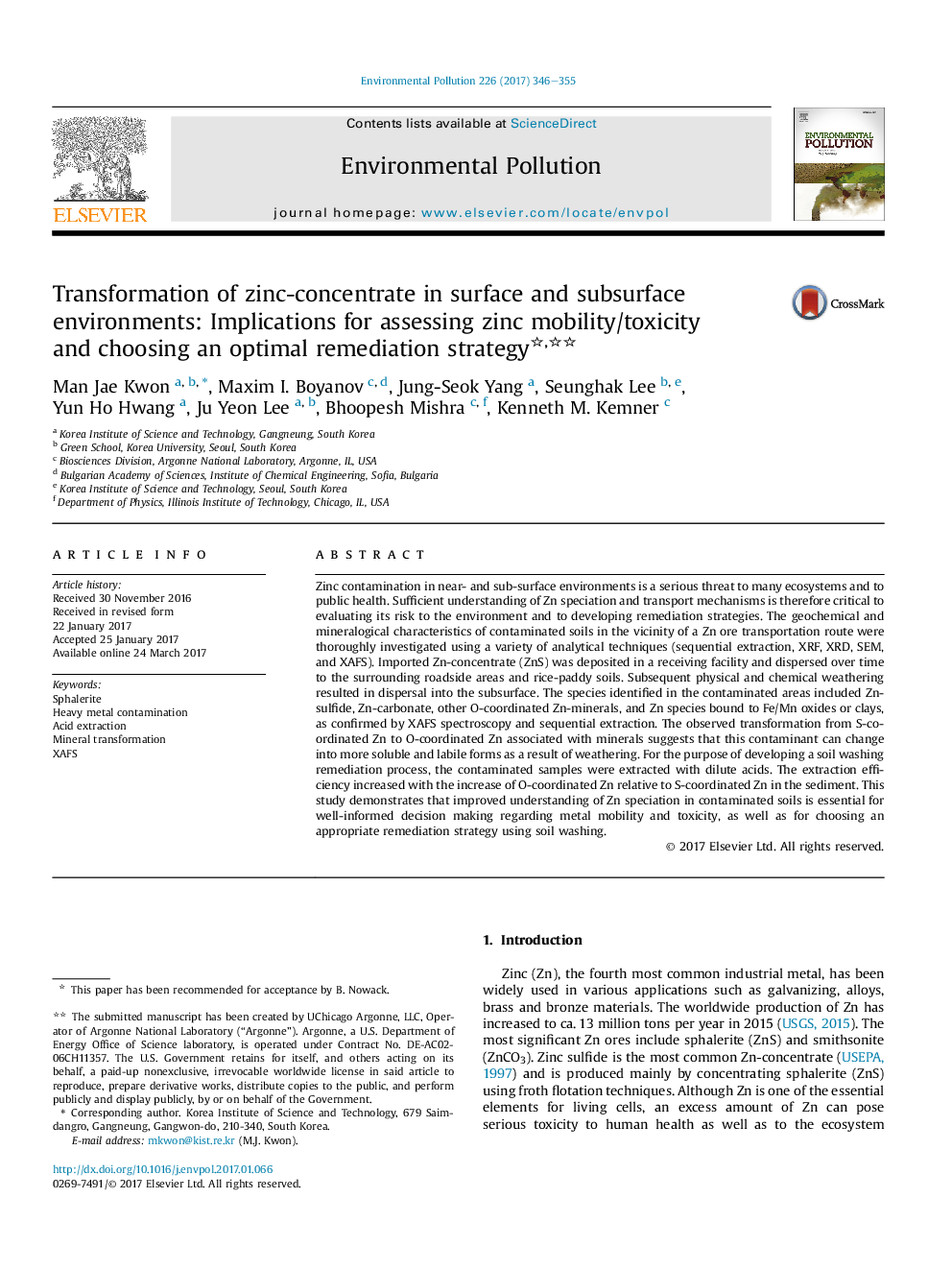| کد مقاله | کد نشریه | سال انتشار | مقاله انگلیسی | نسخه تمام متن |
|---|---|---|---|---|
| 5749097 | 1619147 | 2017 | 10 صفحه PDF | دانلود رایگان |

- Zn-concentrate accumulated in soils transformed to Zn species of various stability.
- Zn species at our site underwent the transformation from Zn sulfides â O-coordinated Zn.
- XAFS/sequential extraction showed a correlation between acid extractability and Zn speciation.
- Metal speciation enables a better assessment of metal mobility/toxicity and the choice of an optimal remediation strategy.
Zinc contamination in near- and sub-surface environments is a serious threat to many ecosystems and to public health. Sufficient understanding of Zn speciation and transport mechanisms is therefore critical to evaluating its risk to the environment and to developing remediation strategies. The geochemical and mineralogical characteristics of contaminated soils in the vicinity of a Zn ore transportation route were thoroughly investigated using a variety of analytical techniques (sequential extraction, XRF, XRD, SEM, and XAFS). Imported Zn-concentrate (ZnS) was deposited in a receiving facility and dispersed over time to the surrounding roadside areas and rice-paddy soils. Subsequent physical and chemical weathering resulted in dispersal into the subsurface. The species identified in the contaminated areas included Zn-sulfide, Zn-carbonate, other O-coordinated Zn-minerals, and Zn species bound to Fe/Mn oxides or clays, as confirmed by XAFS spectroscopy and sequential extraction. The observed transformation from S-coordinated Zn to O-coordinated Zn associated with minerals suggests that this contaminant can change into more soluble and labile forms as a result of weathering. For the purpose of developing a soil washing remediation process, the contaminated samples were extracted with dilute acids. The extraction efficiency increased with the increase of O-coordinated Zn relative to S-coordinated Zn in the sediment. This study demonstrates that improved understanding of Zn speciation in contaminated soils is essential for well-informed decision making regarding metal mobility and toxicity, as well as for choosing an appropriate remediation strategy using soil washing.
Graphical Abstract. Conceptual model of the apparent physical and geochemical processes controlling surface-subsurface partitioning of Zn in the study area.172
Journal: Environmental Pollution - Volume 226, July 2017, Pages 346-355